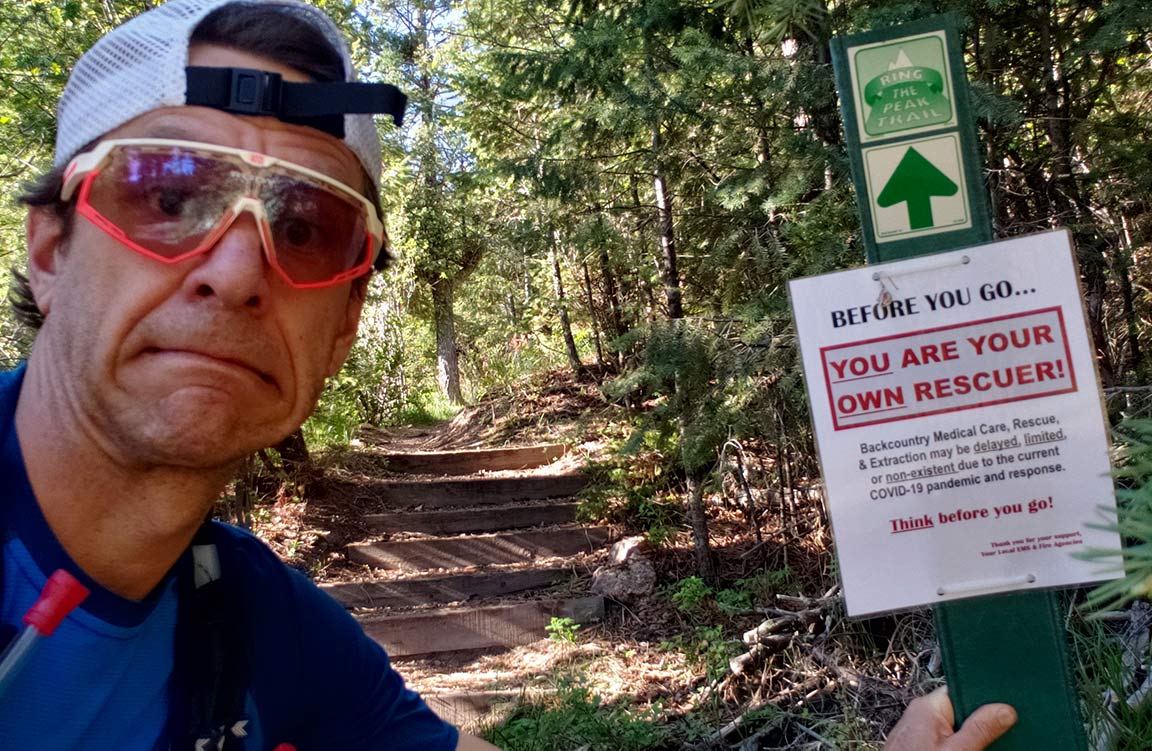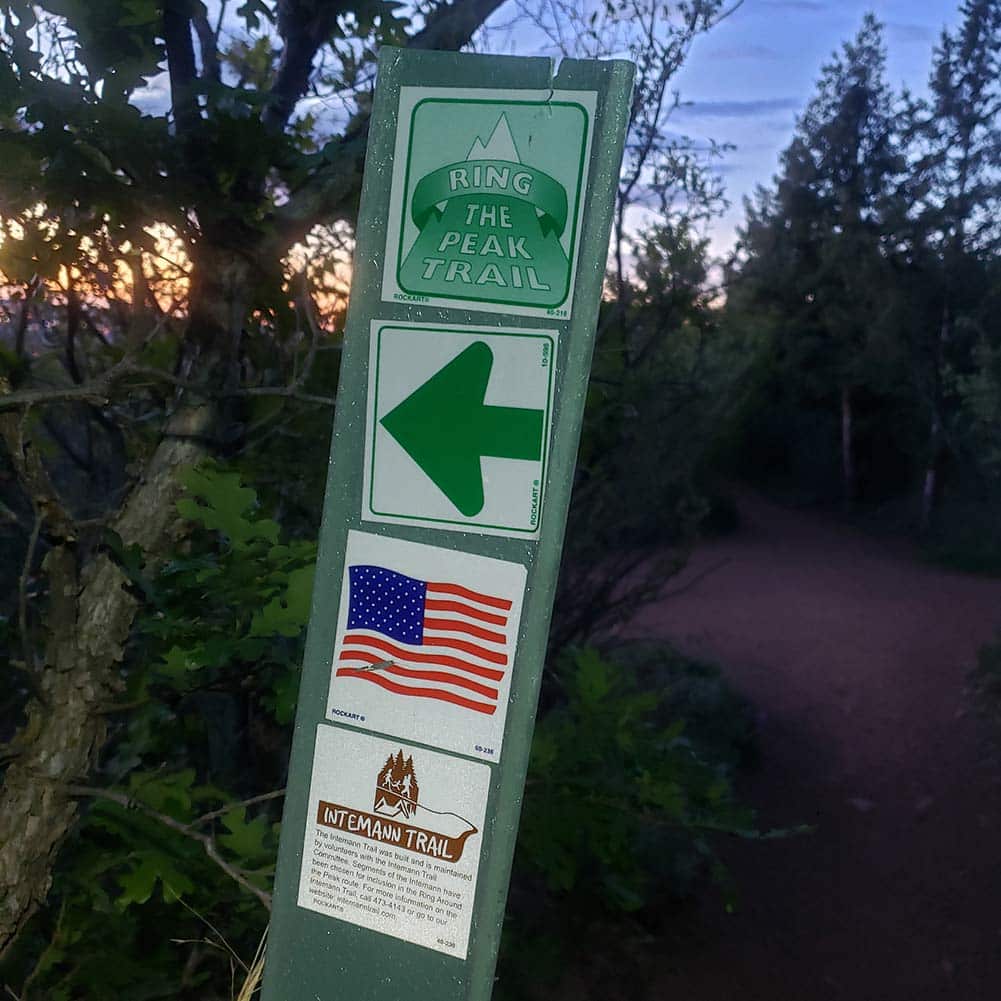
3 Steps to Make the Most of Your 2020 Ultramarathon Training
By Jason Koop,
Head Coach of CTS Ultrarunning
This year has challenged athletes like never before. Races have been put on ice, motivation has been flailing, and political, physical, and social wellbeing around the world has been strained to say the least. As a coach, I’ve been helping my athletes adapt to this changing environment. For some, this time has been used to refocus on why they run in the first place. For others, it’s been about creating challenging and creative ways to inspire training. All of the moving and shaking is done in an effort to make progress. Despite the lack of official races on the calendar, there is no quarantine on improvement. I’ve deployed the following strategies for the athletes I coach, and for myself, and they can also help you make the most of this summer season.
Take 10% off of the table
It should come as no surprise that racing during 2020 is going to be hit or miss. From March through June there was not a race to be had. With athletes either in ambiguous situations (will my race happen?) or with their races outright cancelled, the need to accumulate copious amounts of volume, vertical and intensity was not at the top of the priority list. Nonetheless, I have been and am still insistent that athletes train with intent. My athletes have been doing specific workouts, have organized periodization plans, and run with a purpose. However, without the omnipresent pressure of a race looming overhead, I have found that over the first half of the year, most of my athletes have taken about 10% off of the table, either in terms of total hourly volume or the number of hard workouts, or both.
The result? The athletes I have been working with have experienced fewer injuries. In any normal year, approximately 25-33% of the athletes I work with sustain some sort of injury (side note: I have kept track of this statistic for the last 10 years). As a bit of context, most research indicates that 20-80% of runners will sustain some sort of injury in a given year (1,2,3). Throughout the first half of this year, the injury rate within the group of athletes I work with has been halved to about 15%.
If you do not have any big races or audacious goals in the near future, take a little off of the table. Your body will thank you.
Add a personal project
To replace races that are not happening, athletes I work with have added personal projects as surrogates. Some of these have been routes pieced together from their doorstep, and others have been established routes and even official racecourses. I have athletes doing a marathon a month for the whole year, solo 100-mile runs, and even Everesting their local climbs. I recently got in on the fun by completing a solo 75-mile circumnavigation of Pikes Peak from my house. The route was something I always wanted to do, but year after year I came up with different excuses of why I couldn’t square away a whole day to complete the endeavor.

Whatever your personal project is, make it meaningful and challenging to you. Your personal project should be just that, personal. The route, the number of miles and/or the destination should have a deeper connection with you than some handful of arbitrary statistics. If your personal project is a particularly tall order, feel free to treat it like a race by adding some specificity into your training (more on that in a second), taper for it, and recruit your friends and family as crew and put together a ‘race’ plan.
The result of this is that, in the absence of an official race, you have something to aim for and train toward. While it’s true that many trail runners are struggling with flagging motivation, a personal project can serve as a stop gap measure to make sure your fitness does not totally fall off the wagon.
► Free Ultrarunning Training Assessment Quiz
Take our free 2-minute quiz to discover how effective your training is and get recommendations for how you can improve.
Include more variety
The principle of specificity is one of the things I harp on with athletes as their goal races draws near. In a normal context this means that the intensity of your training, your nutrition plan, terrain and the amount of vertical gain and loss should all be tailored towards the specific demands of the event. This means monotonous training on the same terrain, near the same intensity for the several weeks leading up to a race. With few races to target, the concept of specificity can be tempered a touch for the time being. This can foster the opportunity for greater variety of training on just about any angle, whether it’s the type of terrain, intensity or even modality. So, if you relentlessly train on steep terrain, take a day or two per week and run on the pavement. If you have access to a bike, use it in substitution for an EnduranceRun. If you normally use block style training structure,where you train at the same intensity for a few weeks in a row, consider alternating high intensity days with medium intensity days throughout any given week. Heck, you can even jump in on the 30-second interval bandwagon if you are so inclined.
Increasing specificity adds the last few percent of improvement on to any training program targeted to a particular race. But more generalized fitness has big benefits, too. You can increase your broad-based conditioning using a well-structured training plan with an appropriate amount of volume and variety of intensities. Then, when it’s time to get really race specific, you’ll be starting from a stronger baseline.
Enjoying This Article? Get More Free Running Training Tips
Get our coaches' best training advice, delivered straight to your inbox weekly.
The advantage you have in 2020 is that you can break out of the narrow confines of race-specific training to give yourself more time to recover, more room to add variety to your training, and the opportunity to pursue personal running and fitness projects that normally get pushed to the wayside.
References
- Kluitenberg B, van Middelkoop M, Diercks R et al. What are the differences in injury proportions between different populations of runners? A systematic review and meta-analysis. Sports Med 2015; 45: 1143–1161
- Hreljac A. Impact and overuse injuries in runners. Med Sci Sport Exerc 2004; 36: 845–849
- Van Gent RN, Siem D, van Middelkoop M, van Os AG, Bierma-Zeinstra SM, Koes BW. Incidence and determinants of lower extremity running injuries in long distance runners: a systematic review. Br J Sports Med. 2007;41(8):469-480.

Comments 1
This was just what a needed to read right now and makes me feel better about what I’ve been doing and plan to do the rest of the year.
I combined a personal project with a virtual race to give myself the boost to run a new route on our local trails for a self supported point to point 50k effort.
Now some friends and I are trying to plan to run the Presidential Traverse in NH that we’ve been wanting too do.
And I’m starting to work with a coach to build in more variety to my fitness work and increase my baseline fitness.
Kyle Reynolds
https://krnaturalphoto.com/